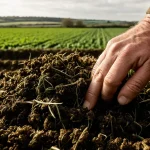Essential Ingredients and Equipment for Classic Toad in the Hole
To master the toad in the hole classic recipe, focusing on traditional ingredients and the right kitchen tools is crucial. Start with quality sausages—pork sausages with a good fat content help create the signature juiciness. The batter is just as important: a simple mix of plain flour, eggs, and milk forms the foundation. Precise measurements ensure the batter rises properly and achieves a light texture. Typically, the ratio is one cup of flour to one cup of milk, with two eggs added, whisked until smooth.
For kitchen tools, a sturdy roasting tin or ovenproof skillet is essential. A metal pan conducts heat evenly, allowing the batter to puff around the sausages perfectly. Avoid glass cookware, as it tends to heat unevenly, risking soggy batter. Preheating the pan with a little oil before adding sausages and batter is a classic step that promotes crispness.
Have you seen this : How do you create a savory beef Wellington at home?
Using these traditional ingredients and correctly measured components, combined with the right cookware, helps to deliver an authentic, satisfying toad in the hole classic recipe every time.
Step-by-Step Preparation for Authentic Toad in the Hole
Crafting toad in the hole starts with the batter — the foundation for its iconic rise and lightness. Begin by mixing plain flour with eggs, adding milk gradually while whisking consistently to avoid lumps. For a batter that achieves a delicate, airy texture, some cooks recommend letting it rest briefly. This step encourages gluten relaxation, contributing to a tender bite once baked.
Also to see : How can you create a delicious toad in the hole?
Next comes the sausages. Browning them beforehand is crucial. This preparation method enhances flavour by creating a caramelised, crispy exterior while locking in juiciness. Place the sausages in a hot ovenproof dish with a bit of oil, allowing them to colour without cooking through fully—they’ll finish cooking surrounded by the batter.
Finally, pour the batter evenly over the sausages in the dish. This layering technique ensures the batter envelopes the sausages, producing the classic contrast between sponge-like pudding and savoury sausage. Bake in a hot oven to encourage maximum rise, typically around 200°C (400°F), until the batter is golden and puffed. This step-by-step approach guarantees a classic texture and deep flavour, hallmark traits of authentic toad in the hole.
Baking Guidelines and Cooking Times
Achieving a baked to perfection toad in the hole begins with setting the right oven temperature. Experts recommend preheating your oven to 220°C (425°F). This high temperature is crucial for creating the traditional puffiness and golden colour of the batter.
Timing also plays a vital role. Typically, cooking times range from 25 to 30 minutes. The first 10 minutes at high heat help the batter rise quickly, forming a crisp outer layer. Then, reducing the temperature slightly or maintaining it ensures the inside cooks without burning.
To prevent sogginess, avoid lowering the temperature too early, as this can stop the batter from rising. Additionally, using hot fat in the baking dish before adding batter creates a barrier that enhances crispiness.
For an evenly cooked dish, place the toad in the centre of the oven. This ensures balanced heat exposure, preventing undercooked spots.
Remember, following these baking guidelines and cooking times promises a beautifully puffed and golden toad in the hole every time—a true classic meant to impress.
Serving Suggestions and Classic Pairings
To serve toad in the hole authentically, complement it with traditional accompaniments like creamy mashed potatoes, buttery peas, and caramelised onion gravy. These side dishes perfectly balance the rich, savoury flavours of the sausage-batter bake, enhancing the overall experience.
For sauces, onion gravy is a classic choice; its deep, sweet notes contrast beautifully with the crispy batter. English mustard or horseradish sauce also add a zesty kick, appealing to varied palates.
When serving toad in the hole family-style, consider slicing it into portions right from the baking dish to retain warmth and encourage communal dining. Arrange sides on the table, allowing guests to customise their plates. This fosters an inviting atmosphere and ensures the dish remains the star of the meal.
If you have leftovers, store them in an airtight container and refrigerate promptly. To reheat, use an oven at 180°C for 10-15 minutes to regain the batter’s crispiness. Avoid microwaving, which tends to make the batter soggy and less enjoyable.
Following these serving tips maximises enjoyment of this beloved British dish.
Avoiding Common Mistakes and Troubleshooting
Baking a perfect toad in the hole requires attention to common pitfalls. One frequent error is a batter that turns out flat or dense. To avoid this, mix your batter until it’s smooth but don’t overwork it—overmixing develops gluten, resulting in a heavy texture. Also, using cold ingredients can hinder rising, so ensure eggs and milk are at room temperature.
Ensuring sausages are fully cooked is another crucial step. Par-cook sausages by frying or baking them slightly before adding the batter. This method helps guarantee the sausages are done when the batter puffs up and browns. Skipping this can leave sausages undercooked while the batter cooks through.
Different ovens vary in heat distribution, impacting how your toad in the hole cooks. If your oven runs hot, reduce the temperature slightly and monitor baking time. For fan ovens, be cautious of faster cooking times, which can dry out the batter if unchecked. Keep an eye on the dish in the final minutes and adjust as needed.
Following these toad in the hole tips can save you from common errors and improve your results every time.
Brief History and Origins of Toad in the Hole
Toad in the Hole boasts a rich history rooted in British comfort food traditions. Its origins date back to 18th-century England, where humble ingredients—sausages and batter—were combined to create an affordable, yet satisfying meal. This dish reflected the frugality and ingenuity of working-class families, turning simple staples into something hearty and inviting.
Over time, the history of toad in the hole reveals its evolution from a basic meat-and-batter concoction into a beloved household recipe. Variations emerged as cooks added herbs, onions, or spices to enrich flavors, illustrating how family kitchens personalized this classic. Despite changes, the dish’s identity remained firmly tied to its core elements: succulent sausages enveloped in golden, crispy batter.
Its status as a British comfort food endures because it offers warmth and familiarity. Whether served during chilly winters or casual family dinners, toad in the hole provides nostalgic satisfaction. This timeless appeal highlights how historical roots continue to influence modern tastes, making it a cherished dish across generations.




